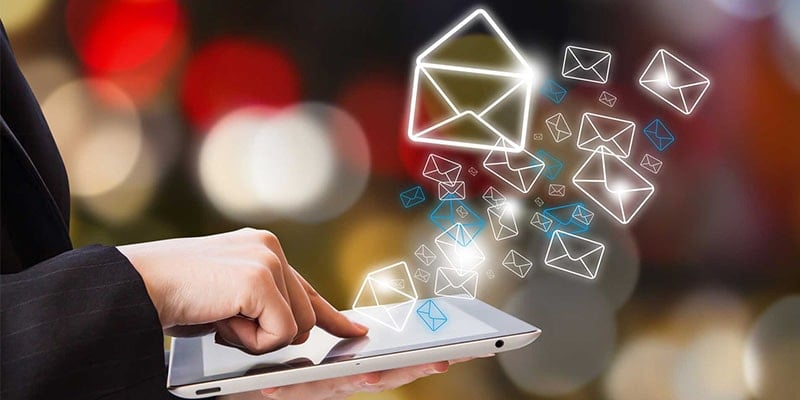
What if emails weren’t just marketing tools? In fact, what would happen if email became a service, a linchpin in brands’ efforts to create seamless multi-channel shopping experiences?
What if emails weren’t just marketing tools? In fact, what would happen if email became a service, a linchpin in brands’ efforts to create seamless multi-channel shopping experiences?
What is email as a service?
Traditionally, marketing emails have focused on delivering a promotion or offer to specific groups of subscribers. If the message hits home, the subscriber clicks a link to receive more information, take advantage of the discount or (fingers crossed) make a purchase.
Sounds great, right? It is. But there’s a catch: consumers overwhelmingly prefer brick-and-mortar experiences to online shopping.
In Q2 2016, e-commerce sales accounted for just 8.1 percent of total sales, according to data published by the US Department of Commerce. So, brands that are unable to parlay marketing emails into increased store traffic or physical store interactions are missing out on significant revenue opportunities.
Recently, Uber announced a partnership with Yext, a location-based technology company. The partnership makes it possible for marketers to add free ride offers to their campaigns. Rather than simply providing directions to brick-and-mortar locations and hoping for the best, marketers can send an Uber to pick customers up at their current locations, using a mechanism embedded in the email itself.
It’s convenient and seamless. Most importantly, it bridges the divide between email marketing and in-store customer experiences, incentivizing shoppers to take an action that directly results in physical interactions with products or service providers.
Use cases for email as a service
Email-based services are valuable tools for marketers who are willing to reimagine the customer journey in a multi-channel context. Although the concept isn’t appropriate for all brands or products, there are a variety of scenarios that are ripe for this approach.
- Retail - The retail sector presents the most obvious use case for email as a service. With a click, customers can take advantage of a free ride to the brand’s nearest retail location, effortlessly transitioning from an online offer to a physical store experience. When deployed strategically and in tandem with other offers (e.g., a sale event), email as a service makes it relatively easy for certain types of customers to respond.
- Entertainment and dining - It’s not difficult to see how the email-as-a-service concept could extend beyond retail to luxury restaurants and entertainment venues. For example, suppose a high-end eatery has an open table later in the evening. By sending an email to loyal diners with the offer of a free ride to and from the establishment, the restaurant could easily fill the table. The same concept could apply to entertainment venues where a single ticket could yield hundreds of dollars in revenue.
- Luxury Autos - The kinds of services brands can provide via email aren’t limited to Uber rides. For example, what if a car isn’t the service, but the product? It’s conceivable that luxury car dealers could distribute emails to high-income prospects with a geo-locational mechanism that sends the car to the customer for a test drive.
- Real estate - In the real estate industry, sparsely attended open houses are a fact of life - a problem email as a service could help prevent. By targeting a segmented list of qualified home buyers, real estate agents can offer free rides or other services that motivate likely buyers to tour their listings.
Tips for including services in marketing emails
The integration of services in marketing emails is still in its infancy. Going forward, marketers will no doubt experiment with new applications of the concept and refine the process. But for now, you should apply several best practices to nearly all email-as-a-service campaigns.
1. Focus on high-end purchases and large cart opportunities.
It doesn’t make sense to provide Uber rides or other services to consumers that aren’t likely to result in a significant sale. However, luxury items and big-dollar purchases are natural product categories for this approach. An $8 Uber ride is a small price to pay for the opportunity to sell a $10,000 diamond ring, or maybe even a house.
But cart size counts, too. An Uber ride might also be an acceptable offer for customers who have a track record of buying large quantities of less costly products.
2. Make it easy.
Subscribers shouldn’t have to jump through hoops to take advantage of the services that are offered in email campaigns. A few months ago, I wrote a Marketing Land article about “easy-click emails,” an email marketing tactic that reduces barriers to conversion.
When combined with easy-click buttons and simple message formats, service offers take convenience to a new level and make it incredibly easy for subscribers to take the all-important next step of physical interaction with products.
3. Segment to identify qualified buyers.
One of the best things about email as a service is that it enables marketers to maximize the impact of incentives by properly aligning customers and products - a critical capability for campaigns that feature high-end product opportunities. For example, a Jaguar dealer can use segmentation to target subscribers based on income, purchase history or other characteristics that increase the probability of a sale.
Some brands are already using the email-as-a-service concept in their campaigns, and I expect it will become even more common for retailers that have physical store locations.
